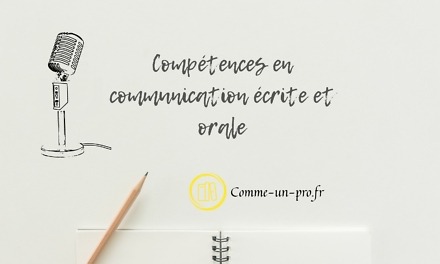To convince an interlocutor or a public of an idea, it is always necessary to go through the verbal communication, but also the gestural communication. You will not succeed if you do not have the strength of conviction required to engage your audience. This is why you need to maintain your strength of conviction as an art, a second nature. How to cultivate your strength of conviction? Learn here how to do it.
What does "convincing" mean?
According to the dictionaries, "to convince is to lead someone, for reasons or evidence, to recognize something as true or necessary. ".
You must present your ideas or arguments supported by examples or evidence. The art of convincing Indeed, it is very important in business and in business life, especially when negotiating an agreement between two parties.
Why is it difficult to convince?
No need to worry if at each presentation of a new project, your ideas always face the opposition of some colleagues or your superior. Why ? Because resistance to new ideas is a universal psychic mechanism. As for organ transplants, rejection phenomena always appear. This is why anti-rejection drugs are prescribed to prevent rejection of the graft by the body.
To overcome this phenomenon of rejection, it is therefore essential to avoid the mistake that many people make: that of convincing others by imposing their ideas on them from the first presentation. Indeed, a simple presentation argued with the consequences and the positive effects that it can generate is enough for a first presentation. There will always be a phenomenon of rejection, but this phase will be shortened by a few weeks at most.
If your ideas are relevant, it will be difficult for those interested not to be impregnated. It is the result of a subconscious work of your interlocutor that will more easily accept your proposal after the second presentation. The governments have understood this because it is in this context that the projects are communicated to the press before being realized. The population will then be more inclined to accept the reforms.
Five psychological theories on the persuasion technique
Like conviction, persuasion aims to get your project adopted by your interlocutor or by an audience. Unlike manipulation that may have unethical ends, conviction and persuasion must always be on the side of the truth. Here are some psychological theories to gain strength of persuasion or belief.
The amplification hypothesis
Amplify your ideas is to introduce any link that you have with your interlocutor or public, whether emotional, cultural, ethical ...
The theory of authority
In principle, this theory consists of providing complete, relevant and authentic information on the subject presented. This proves that you have prepared your presentation well and that you have mastered the subject and that your expertise is relevant.
The theory of priming
This theory consists in associating your idea with a memory generally lived by the public. You can easily sell milk by evoking the childhood breakfasts of your prospects.
The standard of reciprocity
It is the same principle as "to reciprocate", but in the unconscious. If you want your audience to be attentive to your idea or proposal, pay attention to their messages and needs.
The principle of scarcity
It is proven that the more rare something is, the more attractive it is. Now you have to demonstrate its usefulness and ability to meet the needs or solve the problems of your interlocutor.
The YES SET technique
Now that you better understand what it is, here is a technique that is easily associated with the amplification hypothesis previously presented. An YES SET consists of asking a series of questions whose answers will logically be "YES". This succession of approvals puts your interlocutor or audience in a positive spirit. This is called conditioning.
This principle of conditioning involves having someone say "YES" a number of times, as it is likely to continue to approve as long as your proposal is consistent with the questions you previously asked.
The importance of nonverbal communication
According to experts, when you present your projects, no matter how relevant your ideas and what arguments you put forward, if they are recited in a bleak manner, you will have little chance of convincing your interlocutor or your audience. In simpler terms, the container is as important as the content, because communication is about 80-90% non-verbal. This includes gaze, body language, energy, breathing, distance, listening, attention and collaboration. So keep in mind that you are only convincing if you are convinced by what you are saying.
Having a positive body language, however, does not mean being more or less expressive. It's about putting your actions in harmony with your words. To achieve this, ask yourself what emotion you want from your audience. However, it is important that your choice suits the situation. For example, you may not be enthusiastic if you have to announce several layoffs.
Post-show
If the power of conviction is not innate to you, follow these few tips to make your presentation.
- Plan notes by preparing some reminders to help you spot
- prepare yourself carefully for your presentation in order to have more confidence in yourself,
- make sure your goals are easily attainable and do not fall into the realm of utopia,
- smile during your presentation, your audience will do well and will be more inclined to listen to you. Train for it in front of the mirror,
Whether you are at your first, second or umpteenth presentation, do not forget to follow up to see the results and the evolution of your power of conviction. Thus, you will be able to perfect your know-how and expertise in the field to always do better and easily convince your audience, whatever project you present.



